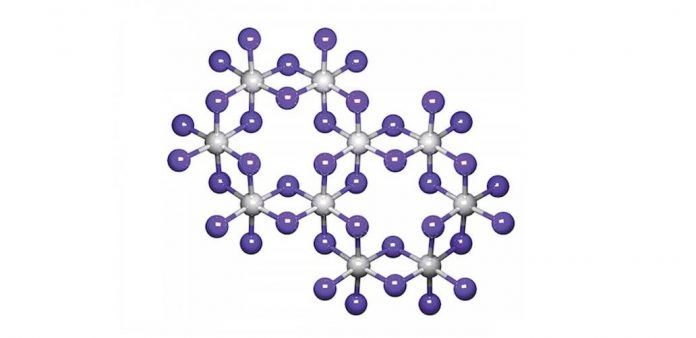There has been an increment in the development of 2D materials since the discovery of Graphene (2004). Since scientists are chasing for a priceless property called magnetism. And after years of studies, it has been considered as two-dimensional magnets does not exist.
But now, scientists at the University of Washington have finally created first ever two-dimensional magnets with extraordinary properties we haven’t seen yet.
Scientists have discovered an isolated 2D material with an intrinsic magnetism that is is highly robust. To do so, they primarily focused on a compound called Chromium Triiodide (CrI3) as it is present in its 3D form. Due to this property, it sees the ‘spins’ of its electrons align in the same direction, without being exposed to an external magnetic field.
By using scotch tape method, this Chromium Triiodide material can also be reduced into two dimensions. When scientists started messing with its dimensional structure, the most fundamental properties start appearing and disappearing while stripping atomic layers.
Until now, no three-dimensional magnetic material has managed to retain its magnetism when cutting down to two dimensions.
One of the team, UW’s Bevin Huang said, “You simply cannot accurately predict what the electric, magnetic, physical, or chemical properties of a 2D monolayer crystal will be based on the behavior of its 3D bulk counterpart.”
Scientists then tested its magnetic properties by shining a beam of polarized light at its surface. If it was still magnetic, the aligned spin of its electrons could be detected in the reflection of the beam, and sure enough, that’s what the team found – the first definitive proof of magnetism in a uniformly 2D material.
Katherine Bourzac explained, “when we progressively added layers back to their two-dimensional samples, things started getting weird.”
“We discovered that a two-layered sheet of this material isn’t magnetic, but when a third is added the substance becomes a ferromagnet again. The material remains magnetic if a fourth layer is added, but gains other properties the researchers say they’re still investigating.”
According to scientists, “It could lead to slimmer electronics than ever. The team also suspects that when they start stacking multiple two-dimensional layers of chromium triiodide into so-called heterostructures, even stranger properties will emerge.”
Xu said, “There, you can get even more exotic phenomena not seen in the monolayer alone or in the 3D bulk crystal. Heterostructures hold the greatest promise of realizing new applications in computing, database storage, communications and other applications we cannot even fathom yet.”
